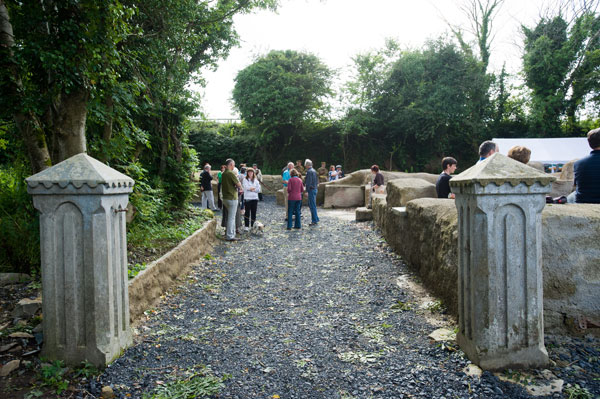WITH the centenary of the 1916 Rising looming, Clare County Council has been urged to take Hastings Cottage under its remit as part of a project linked to Ireland’s commemorations of the Rising and the War of Independence.
Hastings Cottage is one of the most historic buildings in Shannon, having been shown on the 1840 Ordnance Survey Map of the area. However, its construction may have been long before that pre-famine date.
During the War of Independence Brigadier General Lucas, a senior British officer, was taken captive and held there. One of those guarding him was Major General Michael Brennan, who subsequently led the East Clare Brigade of the IRA.
Last year Dúchas na Sionna held an open day at the building, which was attended by descendants of the General.
Speaking at last week’s meeting Councillor Duff acknowledged his own involvement with Dúchas na Sionna and said that the heritage group wouldn’t be able to take responsibility for it without help from the council, and that at the moment it couldn’t put in place a long term maintenance programme for the site.
There is a lot of potential for the site, he added. “From a historical and tourism point of view there are good reasons to be more involved with it.”
He also said that schools can only access it a handful of times per year because of insurance reasons.
Councillor PJ Ryan supported his call, saying that the cottage is a part of history and that it should be preserved. He said that he hopes that at some point there will be money for reconstruction.
Councillor Gerry Flynn asked the meeting if the building is a protected structure and he was told that it is.
A publication from Dúchas na Sionna regarding the farmhouse last year outlined some of the significance of Hastings Cottage.
“The first Ordnance Survey 6’’maps show that Hastings Farmhouse was already in existence in 1840 and was one of a number of cottages and small farms that were located along the Slí na Mara Boreen. The house was a fine example of the vernacular type dwelling of a small to medium size farmer of the 19th to mid 20th century. It is a typical example of the direct entry kitchen layout having a parlour behind the fireplace and a loft over two small rooms at the other end of the kitchen. It was constructed of clay on a stone footing, which survives at the front of the house to windowsill level with a little more surviving to the rear of the house.”
Regarding its place in the War of Independence it said, “The cottage was the setting in a drama that unfolded during the War of Independence when a British army general was held captive. Brigadier General Lucas was the highest-ranking British officer to be taken captive during the War of Independence. His capture made international headlines and involved Republican units across Munster. It was one of the most daring and significant events of the period. The general was held in various safe houses throughout Cork, Limerick and Clare. His eventual holding at Hastings Farmhouse was administered by the East Clare Brigade, IRA. General Lucas later commented on the discipline and efficiency of the IRA, who had held him captive. He was obviously well treated and commented that ‘people were very kind to him’ and he had been ‘treated as a gentleman’.”
Owen Ryan has been a journalist with the Clare Champion since 2007, having previously worked with a number of other publications in Limerick, Cork and Galway. His first book will be published in December 2024.



